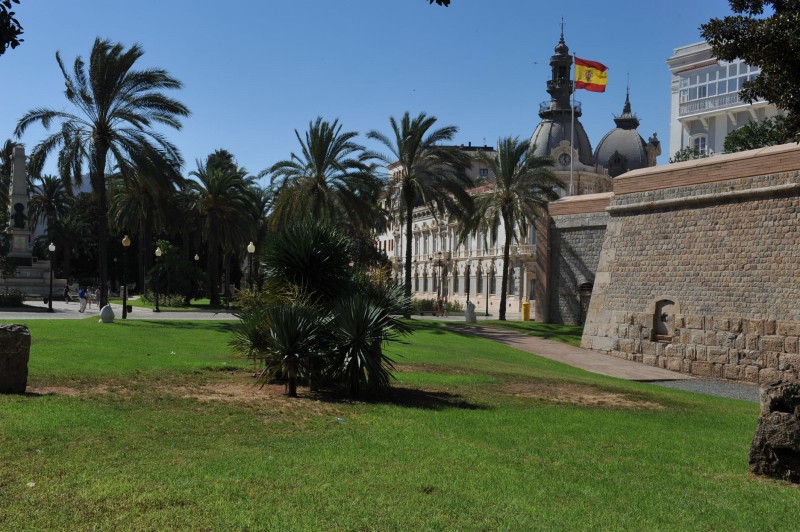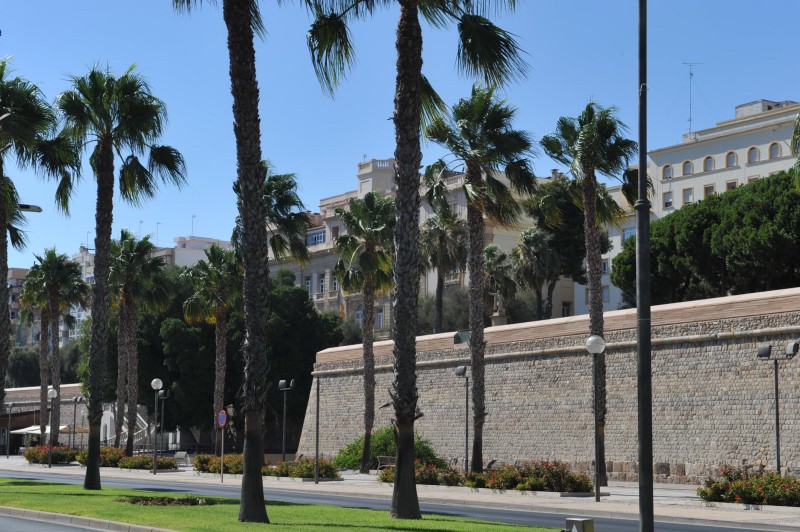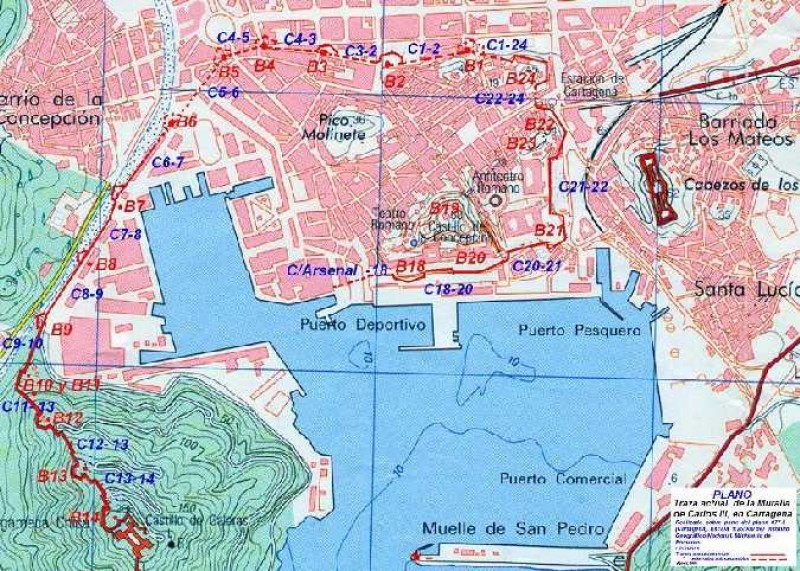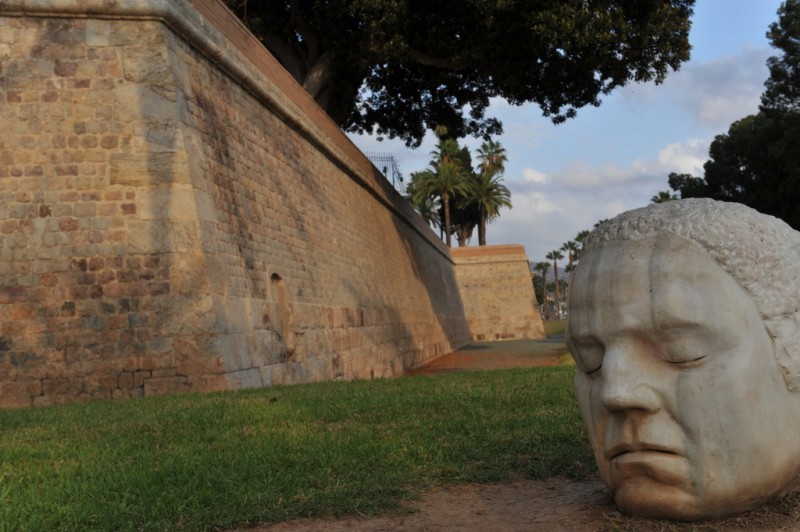The Muralla del Mar in Cartagena, part of the last defensive wall to surround the city

The last city wall of Cartagena was built on the orders of Carlos III
Very few visitors to Cartagena will fail to be impressed by the huge wall which lies parallel to the seafront in the main port area close to the old centre, but few appreciate that in the past this structure looped around the whole of the built-up area making the city all but impregnable in the late 18th century.
Previous defensive walls
The history of Cartagena dates back millennia, due largely to the strategic advantages of its coastal location and the natural defences provided by the five hills in the city *Click History of Cartagena Part 1(. But even by the time of the third century BC, military technology and hardware had developed to the extent where these natural defences were not sufficient, and it is from this era that the “Punic Wall” (Muralla Púnica) dates.
A small section of the original Punic wall can be seen today in the Punic Wall Interpretation Centre which is open for visitors.
New walls were built by the Romans and then by the Byzantines, and after the Reconquista of the city by the Moors in 1243 the Christians also fortified the city. The defences were reinforced, but not satisfactorily, by Felipe II in the 16th century, when it is reported that the architect in charge of the work, Vespasiano de Gonzaga, showed more interest in removing the Roman sculptures which appeared during excavations than actually completing the task with which he was entrusted.

The Muralla de Carlos III
The last of the defensive city walls of Cartagena was the one built during the reign of Carlos III (1759-1788), when Cartagena was named the capital of the Maritime Department of the Levante on the Mediterranean coast and the monarch ordered that its defensive fortifications be strengthened by the construction of a wall which completely encircled it ( see History of Cartagena part 4).
This time the architect named to oversee the project was the military engineer Mateo Vodopich, who in collaboration with Sebastián Feringán worked to make Cartagena virtually impregnable. The five-kilometre “Muralla de Carlos III” eventually surrounded the whole of the old city centre, and was breached by only three monumental gates: the Puerta de Madrid (at the end of Calle del Carmen), the Puerto de San José (in Calle San Diego) and the Puerta de Santa Catalina near the seafront.

The wall started at the south-eastern corner of the Arsenal, next to the CIM building which is now part of the Universidad Politécnica de Cartagena (UPCT) and home to the Museo Naval, Naval Museum, before heading east along the front to the Hospital de Marina, also designed by Feringán. From here it headed north to the hills and fortresses of Despeñaperros and San José, between which the Puerta de San José was located.
The structure then looped back west along the edge of the Almarjal swamp which lay to the north at the time, enclosing the Real Parque-Maestranza de Artillería, and in the district of San Roque (also known as the Barrio del Carmen) the Puerta de Madrid was opened. This is where the Plaza de España is now located.
From here the fortification headed south-west along the eastern bank of the Rambla de Benipila, and up the hill to the castle of Galeras, protecting the area of Algameca.
All along its length, the wall consisted of a series of bastions on top of which guns and cannon were placed, interlinked with straight walls or “curtain walls”.

The wall in the 20th and 21st centuries
By the early 20th century, though, the defensive wall of Cartagena had become redundant, and as the city expanded and grew to the north the decision was made to eliminate around half of it. Unfortunately, the monumental gates also fell victim to the city’s growth: the Puerta de San José gate was dismantled and the stones taken into storage, although they inexplicably “disappeared” over the following years, and a plan to re-construct the gates never got off the ground.

As a result of this, the seafront section of the wall, the Muralla del Mar, is the only section of the wall of Carlos III which remains completely intact. However, long stretches of the inland wall, the Muralla de Tierra, can also still be seen, as can the part which surrounded the Arsenal and reached the castle of Galeras, where some of the original battlements remain. Efforts to restore other sections have met with mixed success, causing some controversy by the use of materials different from those which were employed in the original construction.

The wall also provides the perfect backdrop to the Romans and Carthaginians fiestas which take place in the city at the end of September every year; a "battle" between the opposing forces is always one of the most popular events within the programme.
Click for further information about the Cartagena municipality in English









